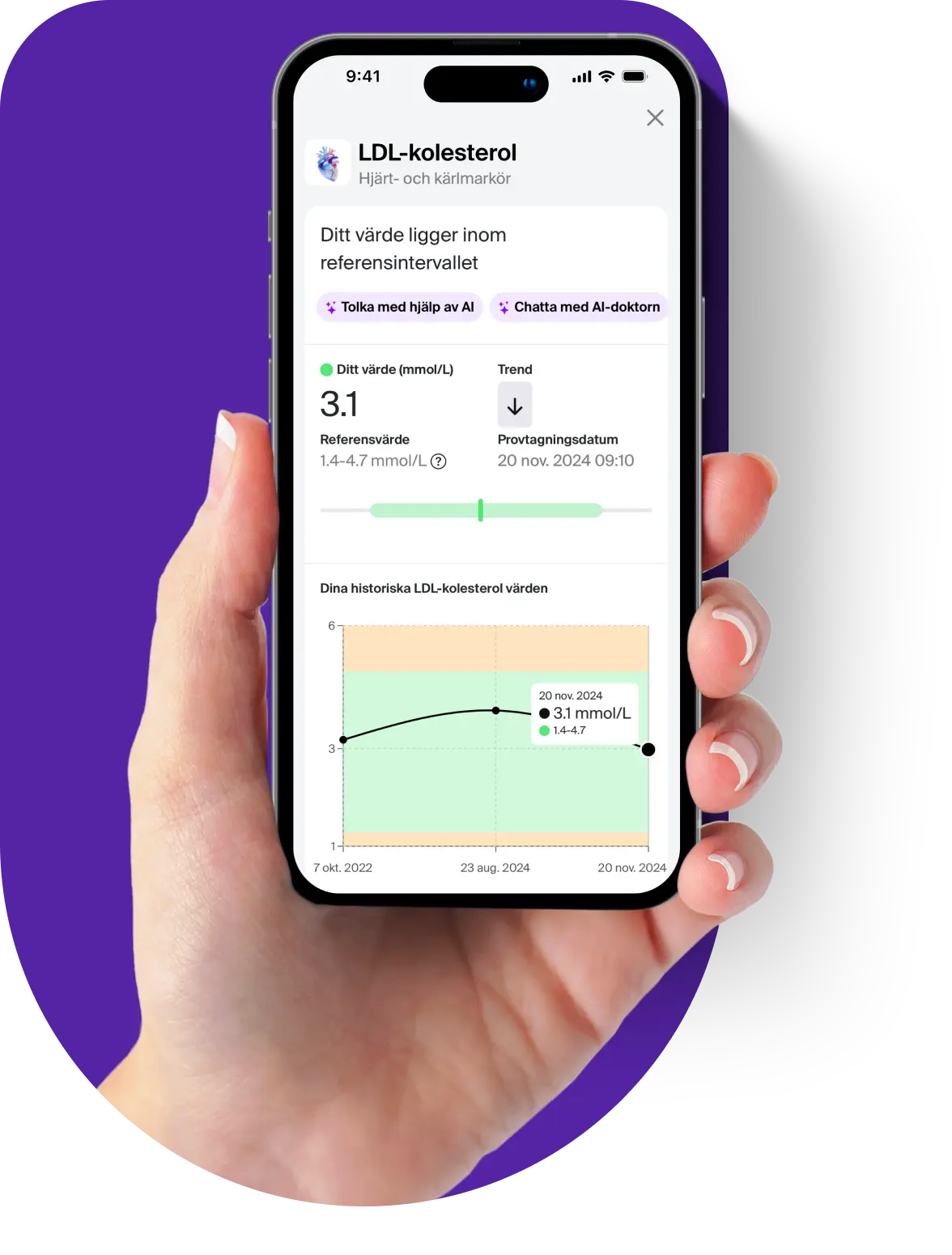Haptoglobin (Hp) – Blood test for hemolysis and inflammation
Haptoglobin is a protein produced in the liver and acts as a biomarker for both hemolysis (destruction of red blood cells) and inflammation. Its main function is to bind free hemoglobin released during hemolysis and transport it to the liver for degradation. In hemolytic diseases, haptoglobin levels decrease, while they increase in inflammatory conditions because the protein is part of the body's acute phase reaction.
Why analyze S-Haptoglobin?
A blood test for haptoglobin can provide important information when anemia, hemolysis or chronic inflammation is suspected. The analysis is recommended to.
- Investigate whether anemia is caused by hemolysis.
- Assess inflammatory diseases where haptoglobin may be elevated.
- Evaluate liver function, as decreased production can affect haptoglobin levels.
When is a test appropriate?
The test may be useful for symptoms of anemia or chronic inflammation, such as fatigue, jaundice, or unexplained anemia. It may also be relevant in the following cases:
- Suspected hemolytic anemia.
- Infections or autoimmune diseases.
- Liver damage, where impaired synthesis of haptoglobin can result in low levels.
What does high or low S-Haptoglobin mean?
- Elevated haptoglobin: Occurs in inflammation, infection and certain diseases affecting the liver.
- Low haptoglobin: Seen in hemolytic anemia, liver disease or certain genetic conditions.






























